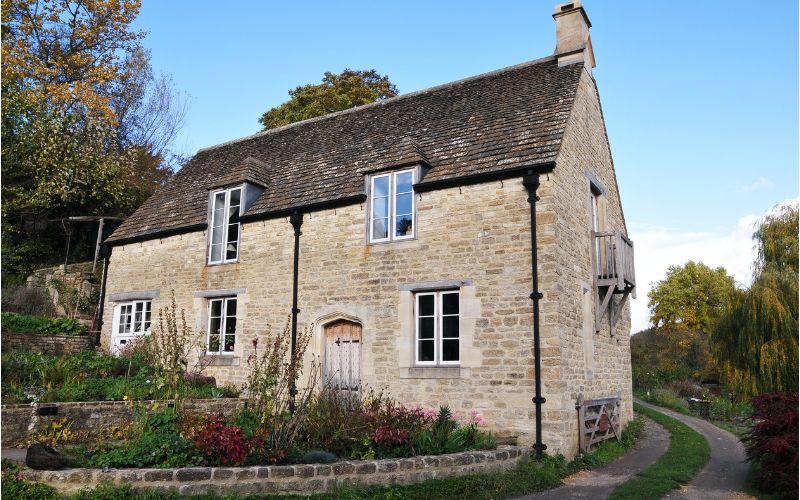From lenders to contractors, architects, surveyors, developers, engineers, and project managers – we are all affected by rising costs. Alex Hurn, Managing Director at Sillence Hurn Building Consultancy, and Cesare McArdle, Legal Director Corporate and Commercial at Herrington Carmichael discuss below rising construction costs and how these can be mitigated.
Prior to the Russian invasion of Ukraine, it was widely believed that construction costs would begin to slowly stabilise, eventually levelling out to pre-pandemic levels. That, however, has not been the case. Instead, the industry is continuing to be beset by unstable costs, with Pinsent Masons predicting a 6% increase in construction costs across the board in 2022.
This paints a woeful picture for an industry already recovering from a sharp downturn in 2020, when the spread of COVID-19 halted construction projects across the UK. Now, two years on from that first national lockdown, construction companies are again facing a commercial uphill battle with spiraling costs being felt industry-wide.
Why are construction costs increasing?
We’re seeing construction costs escalate or remain high in the UK for various reasons...
Most recently, the conflict between Russia and Ukraine has created a materials supply issue that has contributed to the price of timber-related products soaring by 80%. The Softwood Sawlog Price Index was 13.3% higher in real terms (13.5% higher in nominal terms) in the 6 months to March 2022, compared with the corresponding period in the previous year. (Forest Research). This can be attributed to Russia and Belarus being the predominant supplier of timber-based materials to the UK and the fact that many western nations, including the UK, have imposed sanctions on Russian imports.
The price of steel, another commonplace construction material, has also reached record levels this year with British Steel reporting increases of up to 25% (£250 per tonne) in March. Commodities consultancy CRU said their latest recently-assessed UK sections price was at £925 per tonne.
In addition, the end of the Ofgem energy price cap on April 1, 2022, has resulted in UK energy prices increasing by 54%. As well as fueling higher operational costs for construction businesses, this price hike will have a significant bearing on the manufacture of widely-used construction materials such as brick and glass, the production of which utilises high volumes of energy. We’re also likely to see delivery haulage prices creep up in line with material increases as the cost of fuel in the UK continues to remain high.
At the same time, the residential sector is being tasked to design housing that better accommodates home-based working, while the commercial sector is being challenged to broaden the appeal of the office to draw employees back in. This is resulting in an appetite for higher-spec spaces that prioritise wellbeing and community. Acoustic soundproofing and AV requirements are also increasing, while the major plant is going up in price and HVAC systems are getting more expensive.
What are the options for clients looking to mitigate construction costs in this market?
Companies looking to minimise the commercial impact of rising construction costs have a few options.
- Bringing a project manager on board at the point in which designs are still being worked-up will create room early in the build for the PM and architect to work together in specifying materials. Investing time in getting the design right in this way will enable you to better control costs and avoid change notices further down the line. You should also seek to engage with contractors before finalising any specifications, as they will be able to advise you in terms of material costs and lead times, again helping to mitigate any last-minute changes.
- Another way of offsetting rising costs is by reducing the length of time your quotes are valid. Changing your terms from 90 to 30 days, for instance, offers you greater protection against sudden price hikes that would otherwise see your profit margins adversely affected. Many firms are now doing this. Where possible, also try to lock in prices with suppliers, so if rates and materials do increase further, you’ll avoid the hit.
- Modern construction methods such as modular are becoming a more serious option in the industry however, funding can be challenging as UK lenders are wary of the risk associated with offsite development.
If I’m the contractor and my costs go up can I pass these costs onto my clients?
Legally speaking, it depends on what your contract says and the basis on which you set up your fees. Lump-sum payments are still favoured within the construction sector, but the issue with most lump-sum contracts is that they don’t allow for price rises as a result of cost increases unless fluctuation provisions are allowed for in the contract (and frequently they are not).
One way to contend with this is to factor in a volatility risk within your lump sum quote. Another option could be to build a provisional sum clause in your contract, but it’s unlikely you’ll get a client who will agree to this term in the current climate.
However, there’s nothing to prevent you from approaching a client, explaining the situation, and seeing if they’d be willing to entertain a conversation. Most in the construction industry are sympathetic to the current trading environment and should at least be willing to attempt to work with you to find a resolution.
Another option is to agree to share the risks of any cost increases with the client at point of contract, which is an approach taken in some of the pricing models in NEC Contract.
What can I do if my contractor is applying for payments as a result of their costs going up?
The law is strict when it comes to this matter so if you are given a payment application from a contractor, and you don’t agree with the amount, you need to respond to it with a pay less notice. Failure to challenge the payment application within the specified timeframe will result in you being legally bound to pay whatever amount the payment application specifies, regardless of whether you consider the total to be accurate.
We are now in a “pay now, argue later” position meaning that if you do fail to issue the required payment notice you will need to pay the amount in the payment application (if it was properly issued) and then argue about the true value later. Adjudication claims against true value cannot be brought until the sum is paid (if a pay less notice is not served)
If I am acting under the standard form contract, what is the position on whether cost increases can be passed on?
This all depends on whether you’re working on an NEC or JCT contract or some other form. NEC contracts allow for multiple different pricing mechanisms, one of which is a target. However, that does not allow you to recover increased costs. It’s more about what the actual costs of the build, total against the targets you’ve specified, so you’d be required to create an activities schedule or a bill of quantities and work out any cost increases on that basis.
The JCT doesn’t allow you to increase fees because of cost increases if you’re working on a fixed lump sum and, generally speaking, both unamended JCTs and NECs do not contain provisions that allow you to pass on cost increases unless the optional additional provisions described below are selected.
There are, however, additional contract clauses for both the JCT and the NEC that you can pay to have put in. The JCT offers three such fluctuations provisions.
One (A) is a tax and levies and contributions clause related to employees, the second (B) is related to costs of materials and labour, and the other (C) is the formulaic approach for fluctuations.
All were at one time included in the standard JCT contract wording but were used so rarely that they were removed. The NEC has an optional clause that you can add in relating to inflation. However, with optional clauses, they’re not included automatically, and even if you do put them in, many clients will not agree to them.
Next steps
Our project managers are working closely with industry professionals to minimise disruption to their projects via cost management and monitoring. Talk to one of our project managers about your next project here.
For further legal advice contact Cesare McArdle at Herrington Carmichael.
NB: This article is for informational purposes only. It is not intended as legal advice and should not be used as such without seeking further guidance from your legal representative.




